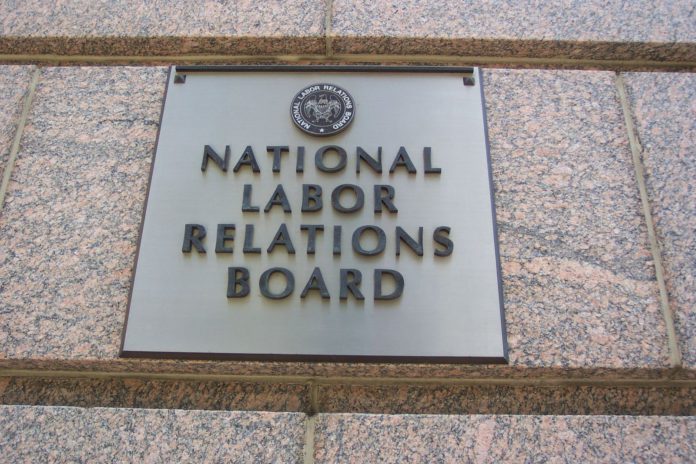
The National Labor Relations Board wants to see more workers and employers use its in-house alternative dispute resolution. Time will tell if its new pilot program will persuade more parties into it, however.
The NLRB on July 10 announced the launch of a pilot program that will have the board taking a proactive approach to evaluating disputes and encouraging more parties to participate in its ADR services. Under the program, the board’s Office of the Executive Secretary will reach out to parties that have cases pending before the board and assess whether those cases might be well served by its mediation process. Even if the NLRB’s in-house mediation offers quicker, cheaper resolution for charges, parties have been historically reluctant to use it.
The NLRB has offered voluntary mediation services for unfair labor charges and compliance cases since 2005, and unlike private ADR providers, it doesn’t charge any fees. The NLRB’s ADR program uses mediators from the Federal Mediation and Conciliation Service or has those cases mediated by the NLRB’s ADR program director. The board says about 60 percent of its mediations have helped parties reach a settlement, all of which received board approval.
Parties typically engage the mediation services early in a dispute and can agree to withdraw from the NLRB’s ADR proceedings at any time.
In a press release, the NLRB said its ADR program allows “parties greater control over the outcome of their cases” and can give them “more creative, flexible, and customized settlements of their disputes.”
The NLRB’s new push for parties to work out their charges early in mediation looks like “an attempt to clear dockets,” said management-side labor and employment attorney Todd Fredrickson, who is a partner at Fisher Phillips in Denver. He noted that the NLRB’s Region 27, which has Colorado in its jurisdiction, is “is pretty darn busy” in particular.
In a memo, the NLRB’s Office of the General Counsel raised the issue back in October 2015 that the board’s ADR program was underused.
“Despite the program’s proven track record, many cases that are excellent candidates for the program are not brought to the program by counsel for respondent or the General Counsel,” associate general counsel Anne Purcell wrote in the memo.
Fredrickson hasn’t yet had a client opt for the NLRB’s ADR services, but he said he can see some advantages to it for certain cases and circumstances. One immediate benefit of using the ADR service is that it can stay the NLRB’s processing of the case for at least 30 days. The hope is that the parties reach an agreement before the case reaches more costly stages of litigating a labor dispute.
“You have time to try to come to some resolution before you have to incur the fees from responding with the position statement,” Fredrickson said.
Also, unfair labor charges that seem to be meritless on their face might not warrant a lot of legal resources to defend against, and a free mediation service might be an appealing way to resolve weaker claims early and confidentially. The process might even lead to a noneconomic resolution and the employer can “settle it without writing a check,” he added.
Some employers might not have the resources to mount a full-blown defense against unfair labor charges to begin with. The program might be particularly beneficial to a “small employer who nonetheless falls under the jurisdiction of the NLRB, who doesn’t have a lot of money to spend on defending an unfair labor charge or set of charges,” Fredrickson said.
Still, employers might be hesitant to use the NLRB’s forum for mediation, especially if they have already had a negative experience with the board, Fredrickson said. Even if employers might be more comfortable engaging a private neutral to mediate the claims, it will cost them. And private mediation won’t give employers the procedural perk that the NLRB’s service will. “Can you do it? Yes, but it doesn’t achieve the benefit of staying those deadlines,” Fredrickson said.
Entering mediation for unfair labor charges carries many of the same risks as it does for mediating charges with another agency, like the Equal Employment Opportunity Commission. The employer hopes the charging party is coming to the table in good faith, otherwise the mediation could end up a waste of time and expense for preparation. Gauging whether the charging party is truly open to a settlement is part of the challenge of deciding whether mediating the charges is the employer’s best course of action. Labor and employment attorneys often try to manage their clients’ expectations when it comes to early-stage mediation.
“We have to make sure they go into it with open eyes that there’s no guarantee that it may resolve at that level,” Fredrickson said.
— Doug Chartier

